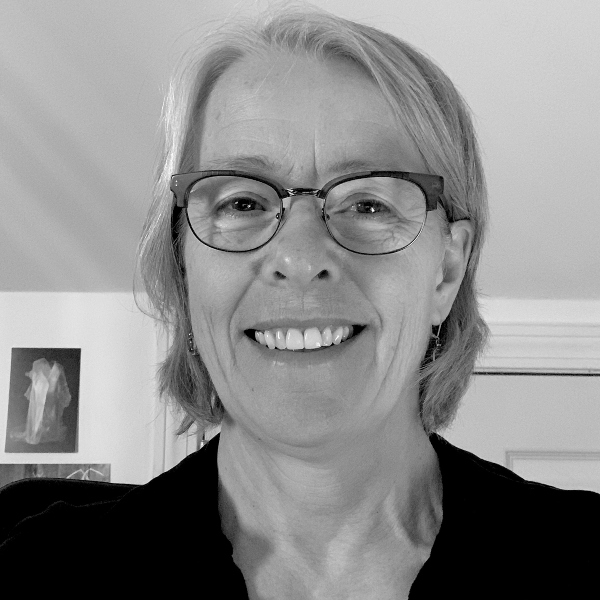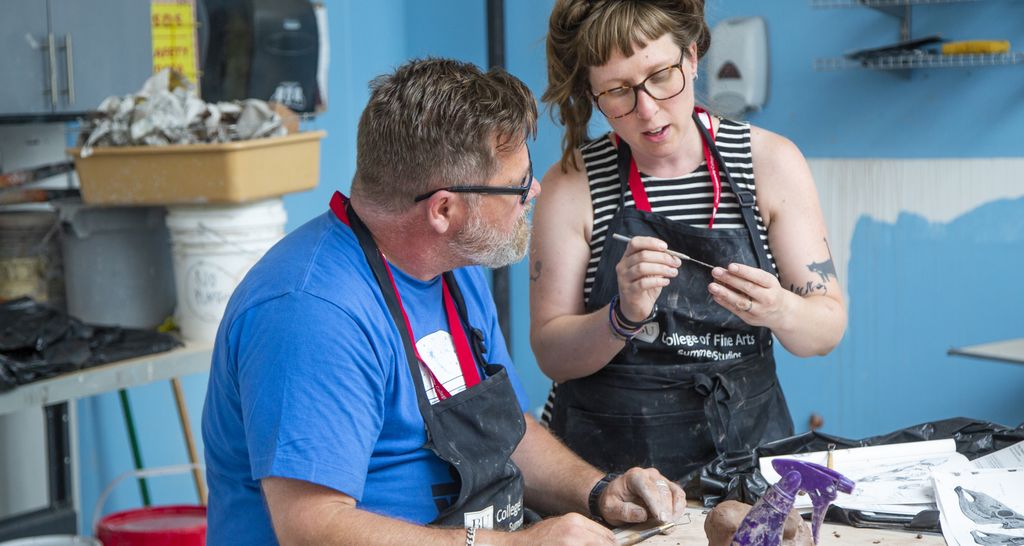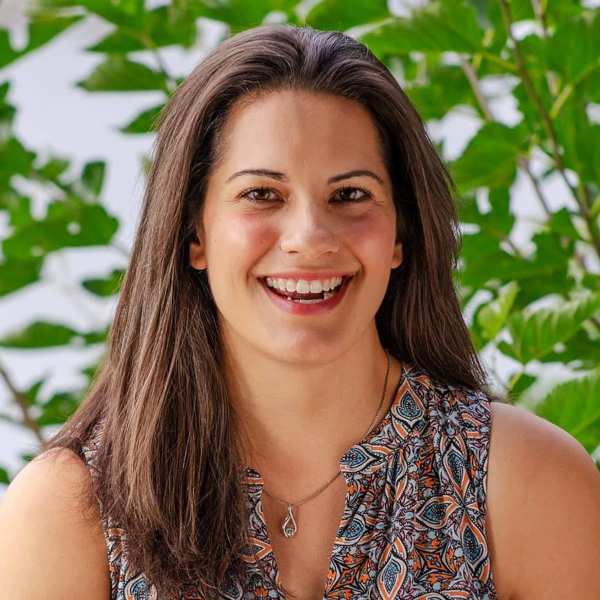Faculty Feature: Rébecca Bourgault
This article was first published in BU Initiative on Cities on March 24, 2023, as part of their Faculty Friday series. By Jacklyn Berman.
Excerpt
Faculty Friday is a series highlighting members of the BU Initiative on Cities (IOC) Faculty Advisory Board, by exploring their work on campus and in the city. This week, we are highlighting Rébecca Bourgault, Chair of Art Education and Assistant Professor of Art, Art Education at the College of Fine Arts.

Rébecca Bourgault, MFA, EdD, is an assistant professor of art education at the College of Fine Arts. Her work as an artist, scholar, and educator focuses on an expanded view of art and education, encompassing lifelong learning in communities, socially engaged practices, and approaches to arts research that explore transdisciplinary and holistic ways of knowing. She has exhibited her work in galleries across Canada and the US, presented and published articles and chapters on topics of art and aging, socially engaged art, and art-based research in edited volumes such as the Wiley Blackwell International Encyclopedia of Art and Design (2019) and Art as an agent of Social Change (2020).
Q&A
WITH RÉBECCA BOURGAULT
BU IOC: Tell me about yourself and your research.
Bourgault: I came to art education as a professional visual artist and art college instructor. Art education and fine arts disciplines are very distinct in academia, but for me, they are connected in more ways than one. I think of education in an inclusive sense. Education is a lifelong process. It refers to multiple modes of becoming, engaging, and learning through experiences. I became an art educator as an artist who enjoys research. Today I am an Assistant Professor of Art and Art Education at the School of Visual Arts at CFA. My research seeks to connect education with the artistic process as a pursuit that is often more relational than object-oriented. I pursue these goals through two main research threads. The first takes the shape of socially-engaged art forms. For this research, I work in the community. In previous iterations, I worked with elders in community centers in New York. For a few years now, I have hosted an open art studio at a shelter for women called Rosie’s Place.
My perspective is not that of a policymaker. As artist Theaster Gates puts it, “artists understand that sometimes the artistic effect is better than policy; it’s more complicatedly inclusive than the town hall meeting.” In this artistic engagement, where art is a living relational practice, I am “on the ground,” working with people. Socially-engaged art is not about products but about creating value alongside people. The women I work with all have had different experiences. I might meet them when they have gone through a traumatic event in their lives, or they come to the shelter for its safety and services. The Open Studio is a living art project for me and a service to others. The goal of this type of work is community-building with small empowering gestures. Maybe it is also a type of place-making. The process of art-making in that context is reflective. It creates a space for participants to ‘be’ without judgment. I think of my pedagogy as one of presence. There is also a reciprocal exchange, a relational ecology that I value.
As an academic art educator, the other part of my research is exploring a method and pedagogy called arts-based or arts research. When conducting research, one often thinks of case studies, interviews, data collection of all kinds, proving a hypothesis, and synthesizing knowledge, which can then be committed to a report. As an educator, scholar, and artist, my research questions are investigated through art making and art thinking. This type of research is holistic in approach, and the process is cyclical and rhizomatic. It does not seek closure.
These two strands are a way for me to bring all the pieces together – the artist, the community artist, and the teacher. It engages my artistic identity with everything else I do.
BU IOC: What do you think are some of the most unique and innovative art education initiatives that have been used in cities?
Bourgault: If we are thinking of public art as an art educational initiative, which it is, we can point to projects such as the non-profit organization called Beyond Walls. They started a mural project a few years ago, giving the city where I live, Lynn, Massachusetts, a community goal articulated around establishing connections, communication, and ultimately, civic pride. This type of social effort at rejuvenation can be found in many cities in America. Perhaps the most famous or celebrated started in Philadelphia over 35 years ago. Mural Arts Philadelphia’s goal was to engage youth in underserved neighborhoods and communities. To bring about change, public initiatives must involve neighborhood residents. It also matters that an intergenerational community feels consulted or, in some ways, included in the projects. Philadelphia’s success and visibility have inspired similar projects in different contexts. In Richmond, Virginia, for example, a project called “Mending Walls” came into being in 2020, during the pandemic, as a response to the division and pain caused by continued racial inequality and police violence. Mending Walls’ main goal was to start conversations and to bring the community together. These big mural movements give their city a visual vibrancy and identity everyone can connect with and enjoy. I am not promoting this type of work in particular, but I mention it because of its visibility and because many other community-building activities and events can be imagined in connection with them. They foster a sense of belonging. Some effective social projects have a much smaller scale and function at the individual level.
From an educator’s point of view, I know that telling a story on a grand scale and being visible matters a lot to a city for the sense of place-making and civic pride it promotes. It gives people a voice and a sense of being visible.
BU IOC: Do you think art and culture ever come at the expense of city planning or policymaking?
Bourgault: It depends on what we believe the function of art to be. Culture is a very broad term that includes all forms of cultural sensitivities and productions, behaviors, propensities, myths, and ways of being. Art and culture as a combined term can be limited to practicalities and budget management more than attending to the complexity of multiple manifestations and meanings. If art is only seen as entertainment and is made to compete with professional sports, for example, we miss the point of art. As a society, we may be attracted to spectacles, success, and fame. While some artists are famous (or infamous), art, for me, is an endeavor that does not function at that level. It has so many tones, purposes, and ways of presenting itself. It does not simply follow the rules of profit and expansion. It does not need to be a business to be relevant. It must retain freedom and be recognized for its capacity to respond, question, activate and reflect ideas about us in this place.

Learn about BU’s Art Education degrees
As part of a professionally oriented art school at a major research institution, the Art Education program at BU School of Visual Arts is uniquely positioned to offer students a comprehensive preparation to a career in the discipline. Students engage in the study of the cultural, social, cognitive, emotional, and artistic dimensions of children and youth development with a focus on diversity and inclusion. They develop skills in applying innovative pedagogies that meet the demands of teaching and research in a global and contemporary environment.
This Series
Also in
Faculty Features
-
December 12, 2023
Faculty Feature: Daniel Parsley
-
September 6, 2023
Faculty Feature: Nancy Goeres
-
November 1, 2022
Faculty Feature: Felice Amato
